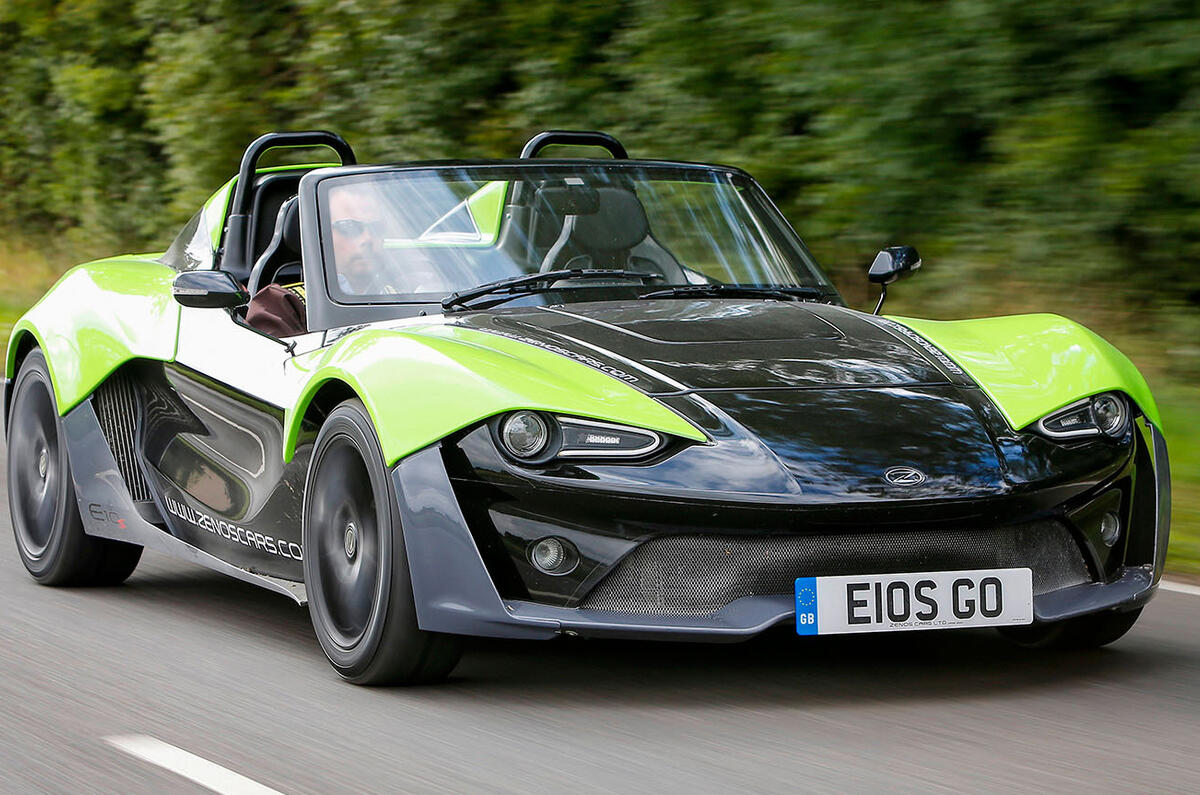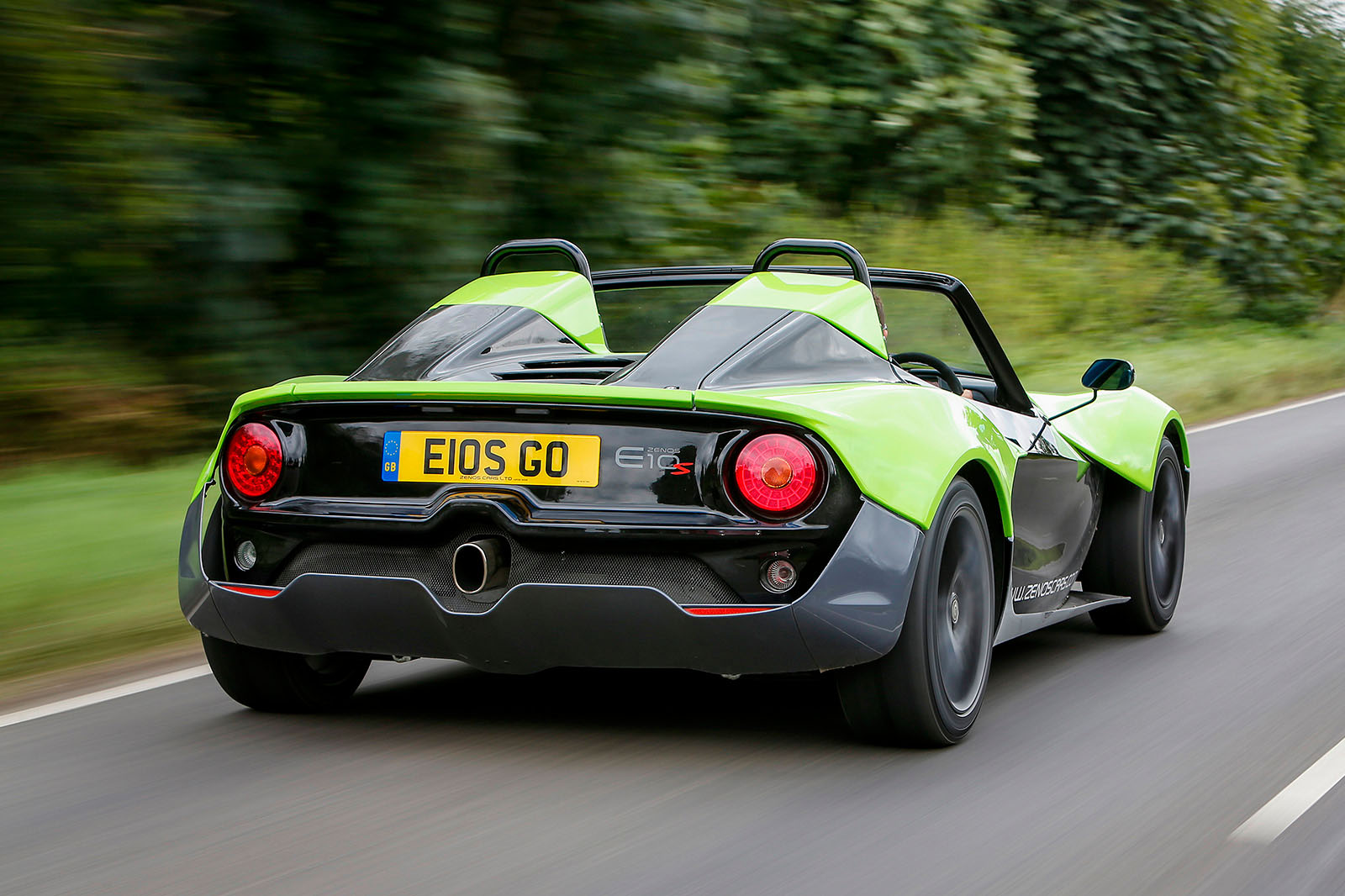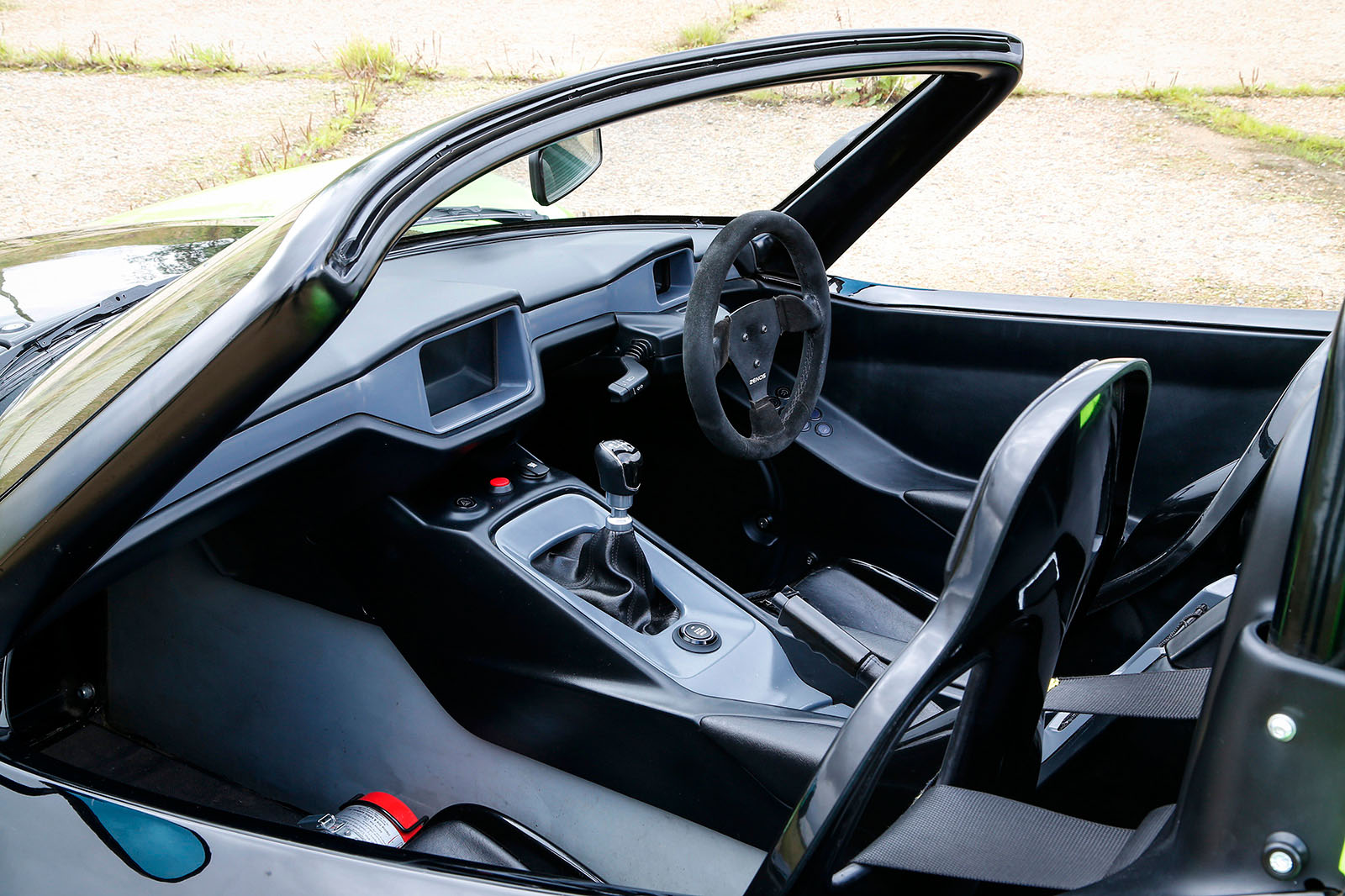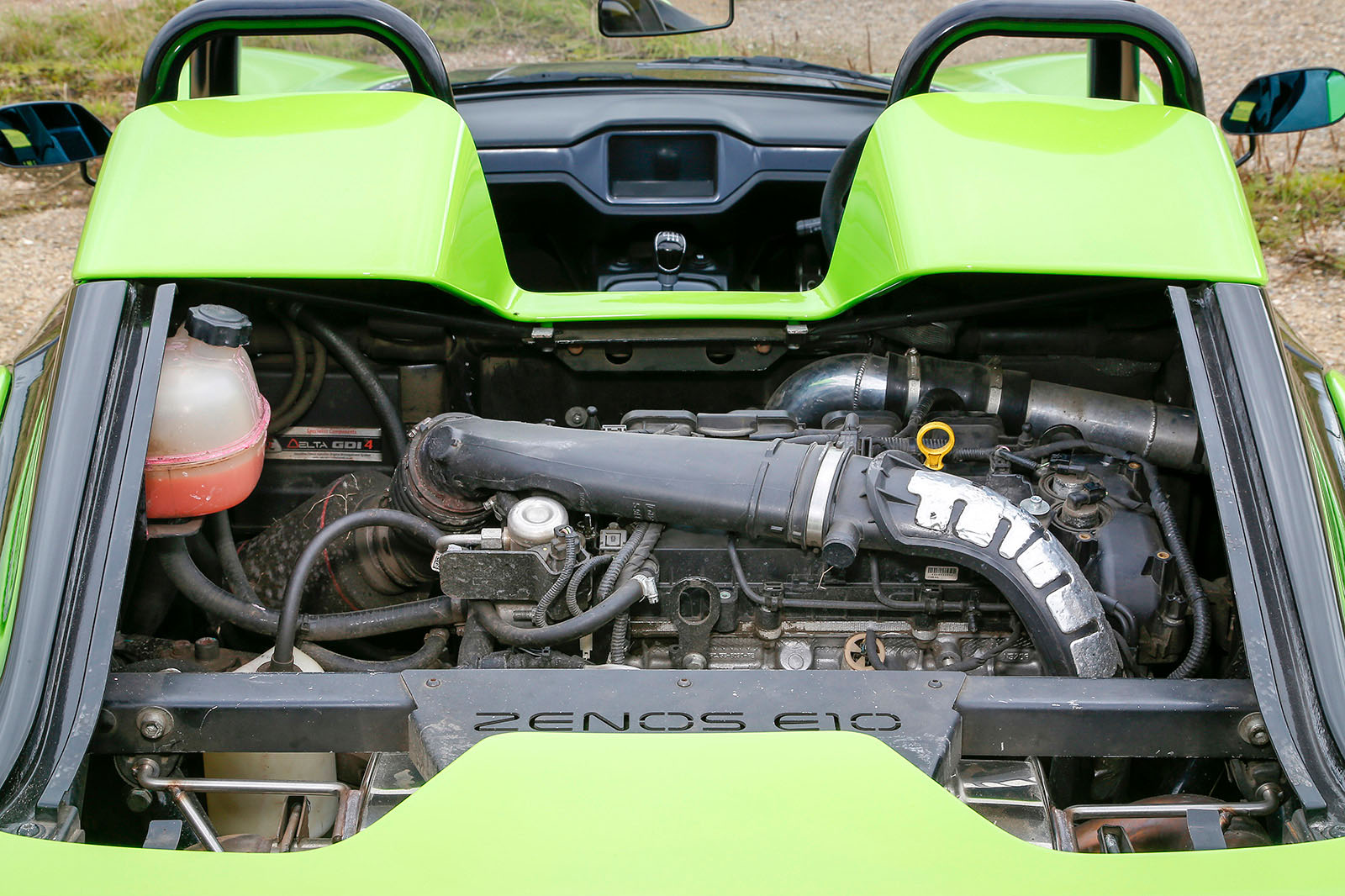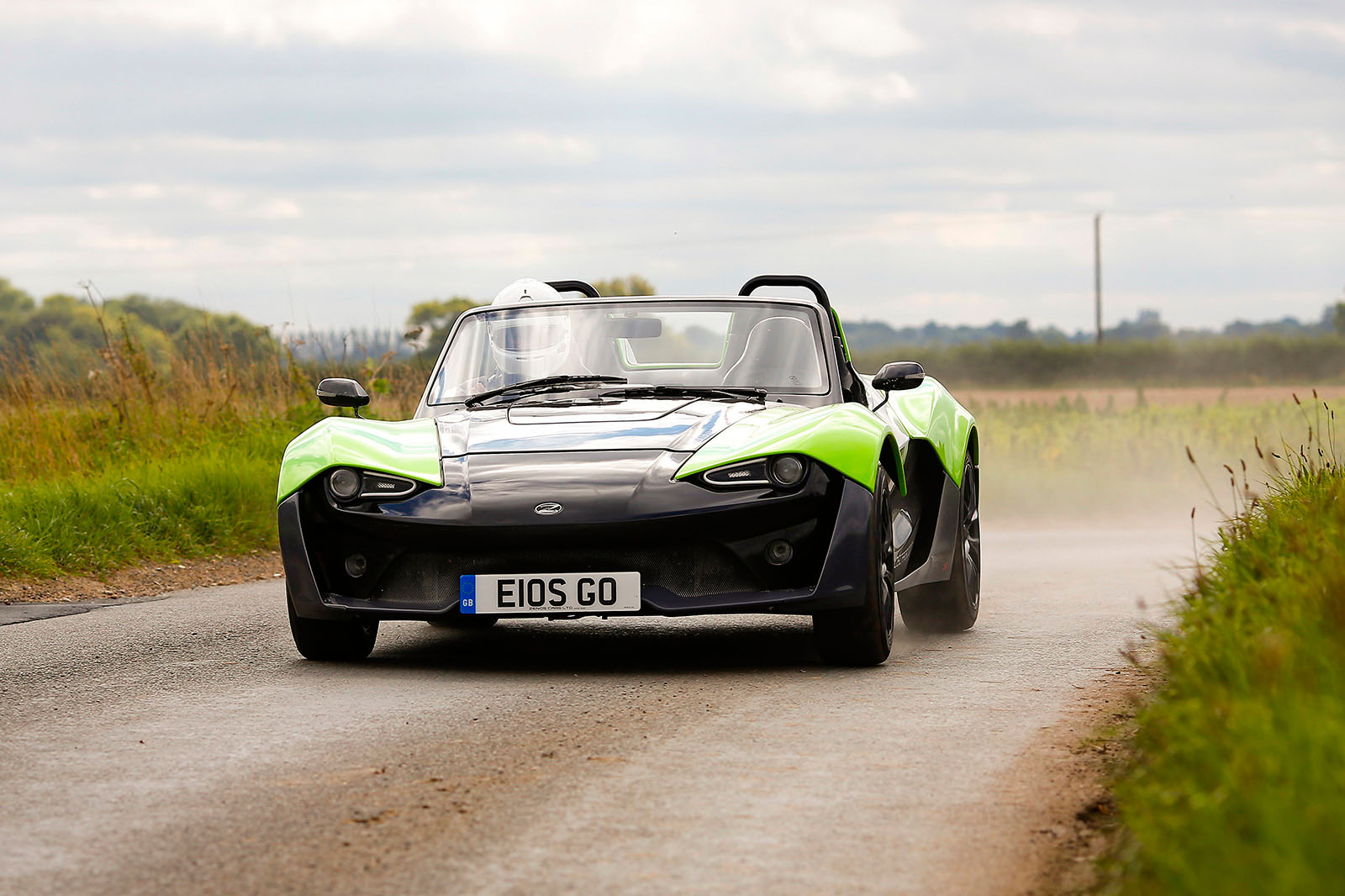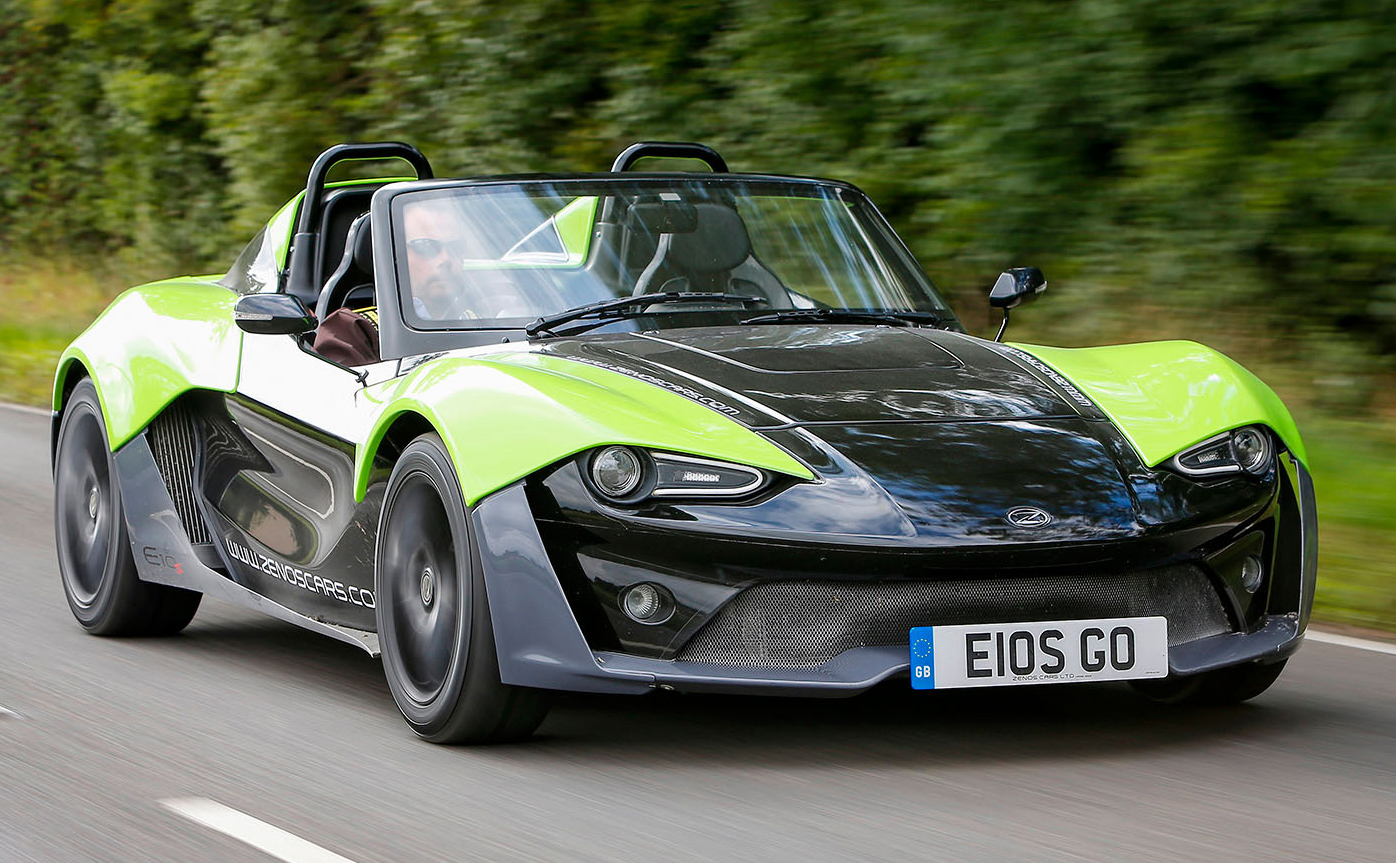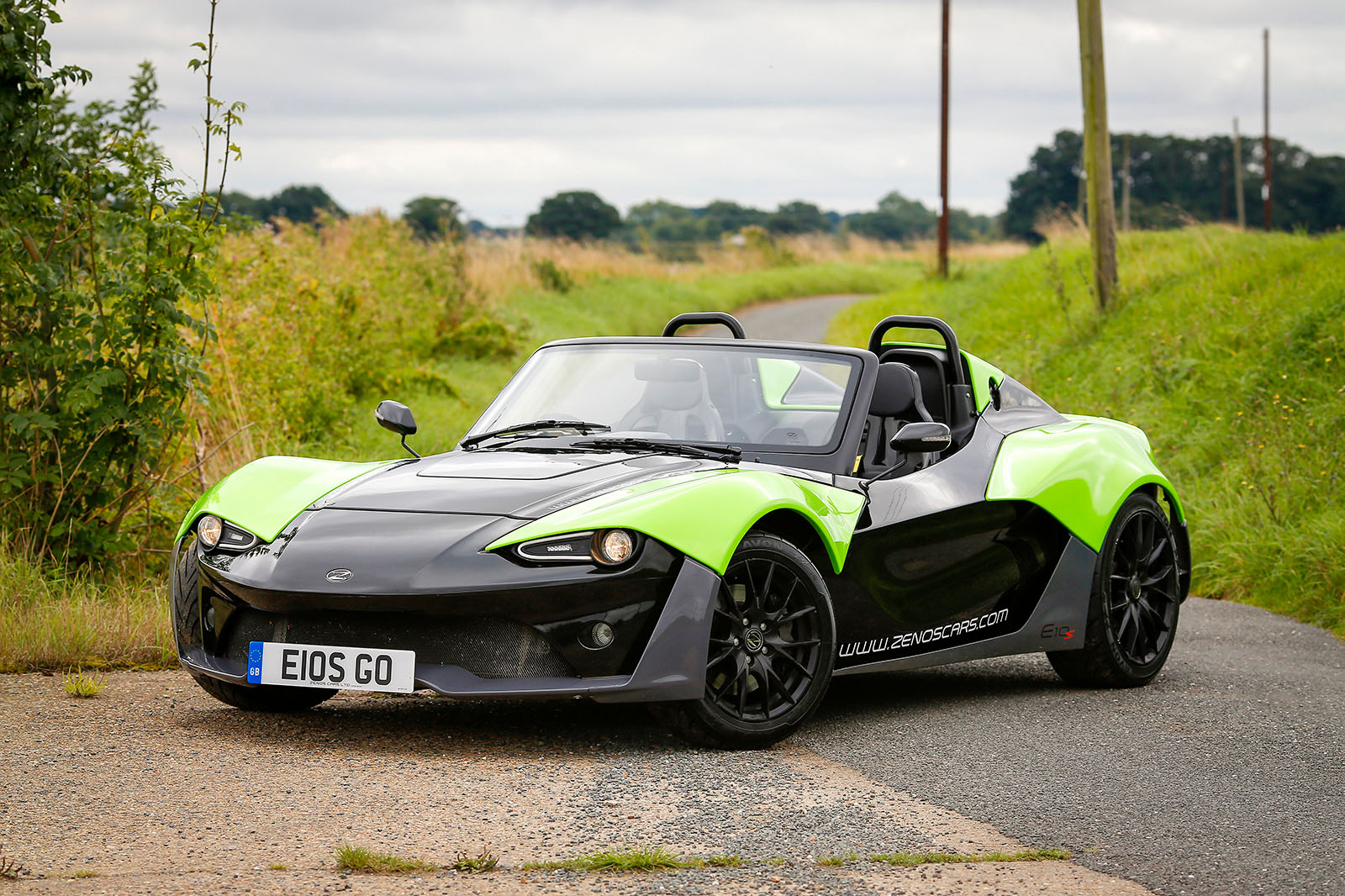Usability is a relative concept in a lightweight sports car. Most are designed for sufficient practicality for short-hop weekend use and track days only. And for most owners, that’s probably usable enough.
However, where a Caterham Seven offers a modest but useful boot, the E10 does not. It’s a minor shortcoming, perhaps. Even so, the E10 remains quite practical for its breed, with plenty of occupant space even for larger drivers, and – in as-tested specification at least – decent protection from the elements.
Our test car was a late-cycle prototype that was a couple of inches short on leg room compared with series-production cars, but even so it offered enough space for one 6ft 4in tester to get comfortable. The steering column is fixed but well placed and the pedal box generous, with large pedals positioned at a respectful enough distance from one another that you needn’t worry about fouling the wrong one accidentally.
The E10’s seats are necessarily quite hard, simple affairs, although they’re comfortable enough over longer trips. The car’s primary control ergonomics are good, with one exception: a shortage of space for the driver’s right elbow. Although taller drivers will be able to prop up their right arm on the side of the cockpit when touring, doing so only limits your leverage on the steering wheel as much as the slightly restrictive shape of the cockpit did before. Something as simple as a cut-out in the cockpit’s side moulding would easily solve the problem.
The only major omission from the Zenos’s specification is a cabin heater, which might be of limited or even questionable use for heating an open car anyway, and part of that requirement is fulfilled by the heated seats that come as part of the optional Track Pack. That’s fair enough, as they work very well. But go for a full windscreen in your Zenos and the only way to dry or demist it on a dewy morning is with the built-in heater element – which doesn’t work half as well for the screen as the aforementioned heated seats do for your backside. We’d therefore recommend carrying a demister pad in the lockable glovebox found in the E10’s footwell.
Multimedia display
There are no entertainment or communications features in the bare-bones cockpit of the E10 — although the 8.0in TFT central display may lead you to think otherwise. The screen simply conveys the digital instruments that would otherwise be littered across the fascia as individual dials and gauges — and in the main, it does so quite well.
The multi-function screen’s digital display shows boost pressure, water temperature, oil pressure and fuel gauges and a trip computer, among other functions, but the most useful is a full-size analogue-style rev counter that’s easier to read than the smaller one ahead of the driver — even at its greater range.
The smaller colour screen ahead of the driver also houses a digital speedometer, which under-read on our test car by about 5 percent, a gear position indicator and indicator repeaters lights.
Overall, you’d say the digital instrumentation is clear enough and just about readable at a quick glance. It’s also a world away from the traditional analogue equivalents you’ll find in other lightweight sports cars of the Zenos’s ilk — and probably not so by accident.


